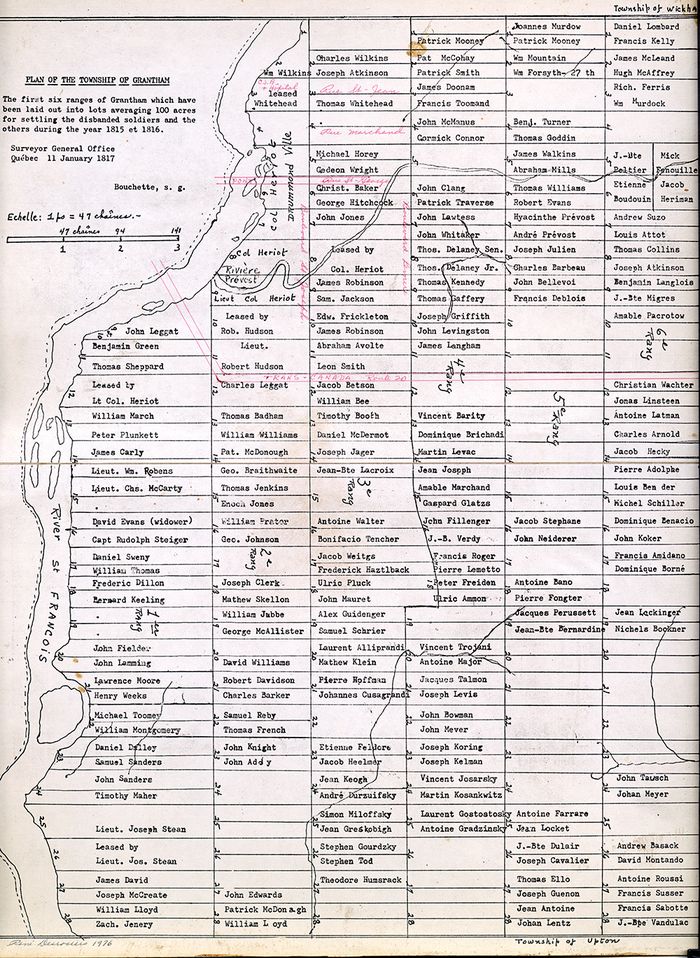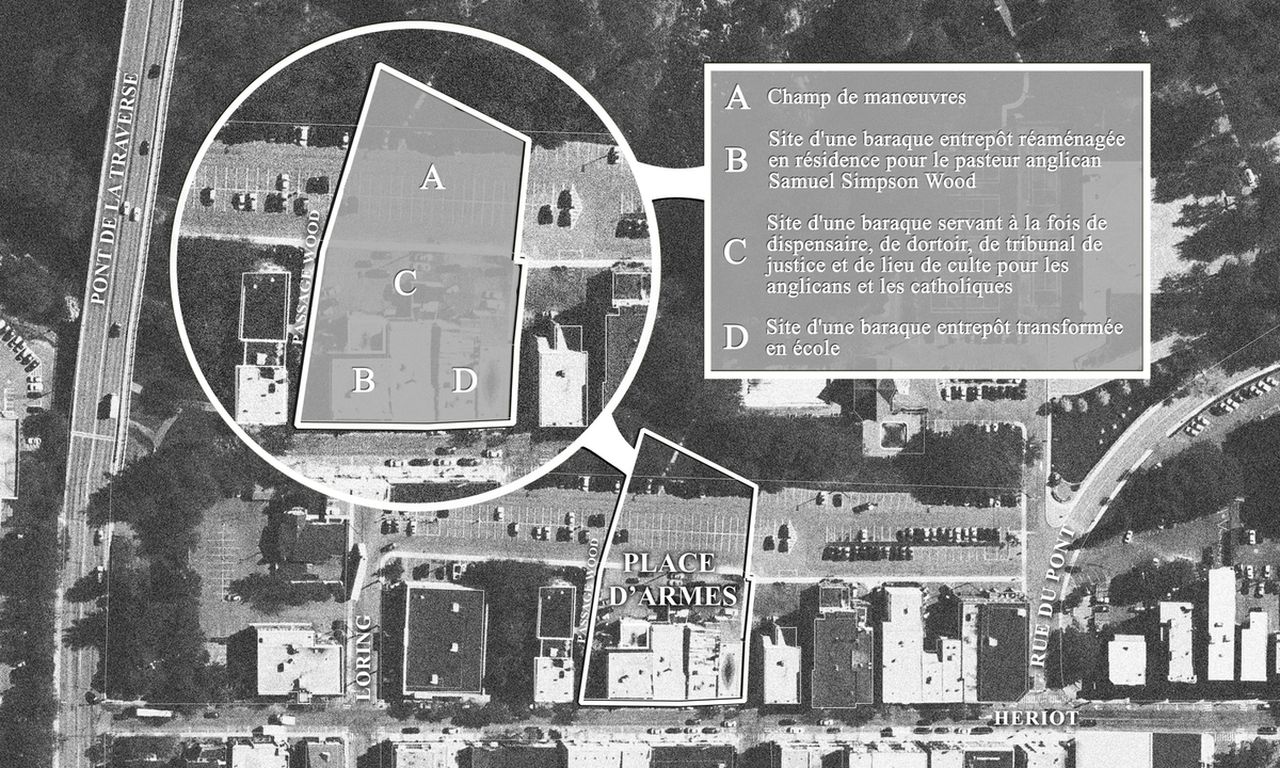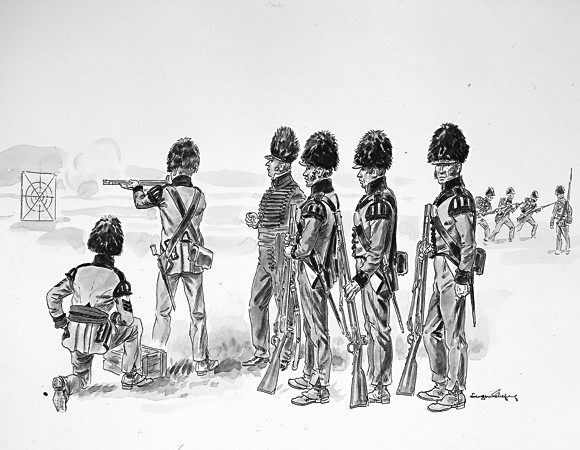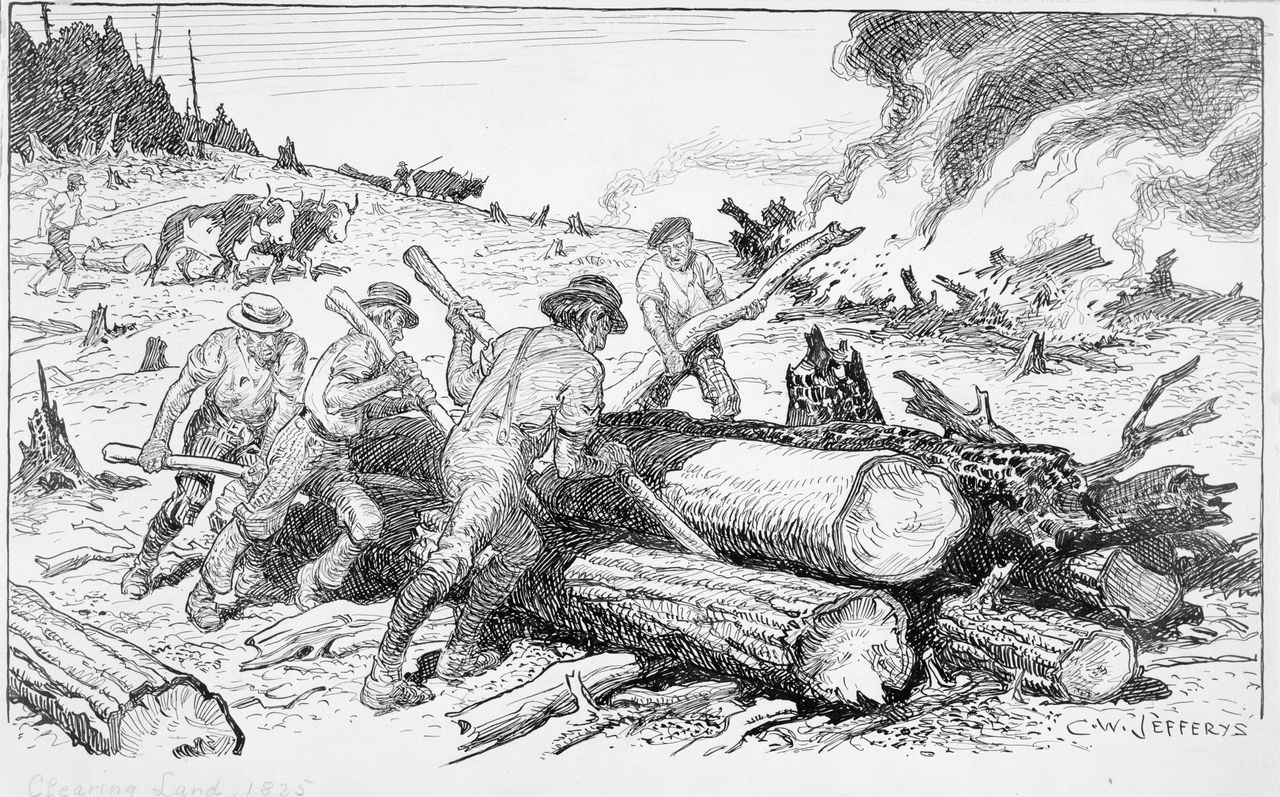The Early Days of a Young Settlement
The first thing that Superintendent Frederick George Heriot did was to have three wooden barracks built on the hillside overlooking the St. Francis River. The barracks served multiple purposes: As warehouses for supplies and dormitories for the veterans waiting to be allotted a piece of land, as a school and a court of justice, and also as a place of worship for different denominations. A military training ground was created beside the barracks which remained in use until the Rebellions of 1837–1838.
The goal was to populate the region with regular soldiers receiving 100-acre lots, and officers receiving grants of 200 to 800 acres. Veterans arrived at William-Henry (Sorel), where they were received by Captain Jacques Adhemar and often reunited with their families. They were given basic food supplies for a year as well as seeds and the tools needed to clear the land. Almost 300 of them, mostly from the 27th and 49th Infantry Regiments, the 4th Royal Veteran Battalion, the Corps of Canadian Voltigeurs and the Swiss de Meuron and de Watteville regiments, settled in Drummondville that first year.
Governor Drummond made a big show of the colony’s success, but the reality was quite another story. Although the settlers did receive some support, they also faced daunting challenges, including lots with poor soil, insufficient food assistance, hard frosts and even snowfall that damaged the crops in the summers of 1815 and 1816, as well as an epidemic of smallpox in 1820. Men who found it easier to fire a musket than to swing a hoe were already abandoning their land in large numbers, to the benefit of land speculators, including Heriot himself.

Map of the Township of Grantham showing the lots owned by Frederick George Heriot, by Joseph Bouchette, 1817.
A fire broke out in a nearby piece of forested land on June 25, 1826. By then, the settlement had dwindled to about a hundred pioneer settlers. The wind picked up the next day, causing the fire to grow so large that it destroyed almost the entire village; only three houses and the two churches (one Catholic, the other Anglican) were saved. No one was reported to have died, but all the seeds, reserves of hay, and provisions, as well as 500 rifles earmarked for the local militia, were lost. The settlers courageously began to rebuild so that the town could rise from its ashes, and indeed by 1832, Drummondville was estimated to have about 400 inhabitants. It was around this time that the unique multiethnic character of the nascent town began to wane, with the arrival of successive waves of French Canadians who were leaving the overpopulated seigneuries bordering the St. Lawrence River to the north.




